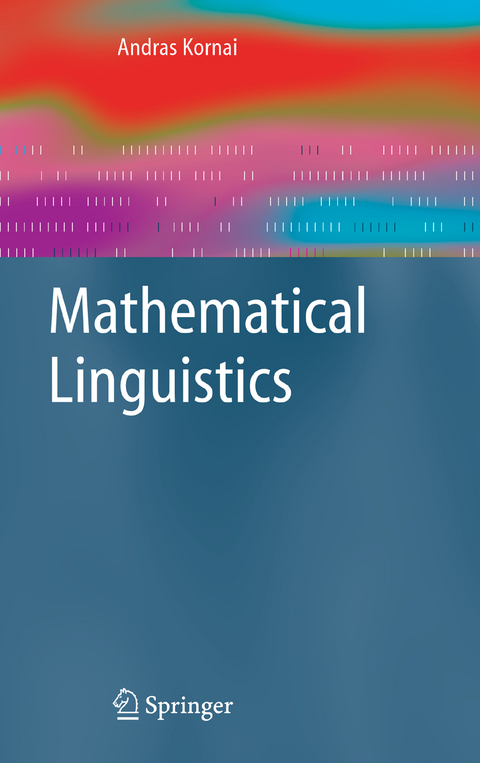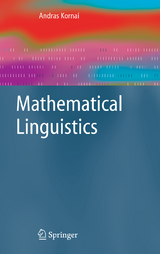Mathematical Linguistics
Springer London Ltd (Verlag)
978-1-84628-985-9 (ISBN)
Mathematical Linguistics introduces the mathematical foundations of linguistics to computer scientists, engineers, and mathematicians interested in natural language processing. The book presents linguistics as a cumulative body of knowledge from the ground up: no prior knowledge of linguistics is assumed.
Previous textbooks in this area concentrate on syntax and semantics - this comprehensive volume covers an extremely rich array of topics also including phonology and morphology, probabilistic approaches, complexity, learnability, and the analysis of speech and handwriting.
As the first textbook of its kind, this book is useful for those in information science (information retrieval and extraction, search engines) and in natural language technologies (speech recognition, optical character recognition, HCI). Exercises suitable for the advanced reader are included, as well as suggestions for further reading and an extensive bibliography.
The elements.- Phonology.- Morphology.- Syntax.- Semantics.- Complexity.- Linguistic pattern recognition.- Speech and handwriting.- Simplicity.
From the reviews:"Kornai’s contribution is refreshingly different in that he treats, in this relatively compact volume, practically all areas of linguistics, phonetics, and speech and language processing. … A single entry point to the central methods and concepts of linguistics that are made largely … to the mathematician, computer scientist, or engineer … . the most likely readership of this book consists of (computational) linguists and others who already know the linguistic issues … ." (Richard Sproat and Roxana Gîrju, Computational Lingustics, Vol. 34 (4), 2008)"This is a remarkable book on the mathematics used for linguistics. … it provides a coherent, well-written view of the math required to model the structure of langiage as used in the main branches of linguistics: phonology, morphology, syntax, and semantics. The intended audience is anyone with sufficient general mathematical maturity, such as advanced undergraduate math. … The math is presented well, and the material has a strong narrative flow." (Rohan Baxter, Computing Reviews, March, 2009)“The book deals … with mathematics inspired by linguistics than with applications of mathematics in linguistics. A large part of the book deals with mathematical models of signal, speech, and handwriting recognition. The book consists of ten chapters. Every chapter contains interesting examples, elegant mathematics and many further reading hints. … The book contains many interesting mathematical models, stimulating examples and elegant proofs, and it is well written.” (Jaroslav Král', Zentralblatt MATH, Vol. 1171, 2009)
| Erscheint lt. Verlag | 10.11.2007 |
|---|---|
| Reihe/Serie | Advanced Information and Knowledge Processing |
| Zusatzinfo | XIV, 290 p. With online files/update. |
| Verlagsort | England |
| Sprache | englisch |
| Maße | 155 x 235 mm |
| Themenwelt | Geisteswissenschaften ► Philosophie ► Sprachphilosophie |
| Geisteswissenschaften ► Sprach- / Literaturwissenschaft ► Sprachwissenschaft | |
| Mathematik / Informatik ► Informatik ► Theorie / Studium | |
| Mathematik / Informatik ► Mathematik ► Allgemeines / Lexika | |
| ISBN-10 | 1-84628-985-8 / 1846289858 |
| ISBN-13 | 978-1-84628-985-9 / 9781846289859 |
| Zustand | Neuware |
| Haben Sie eine Frage zum Produkt? |
aus dem Bereich




